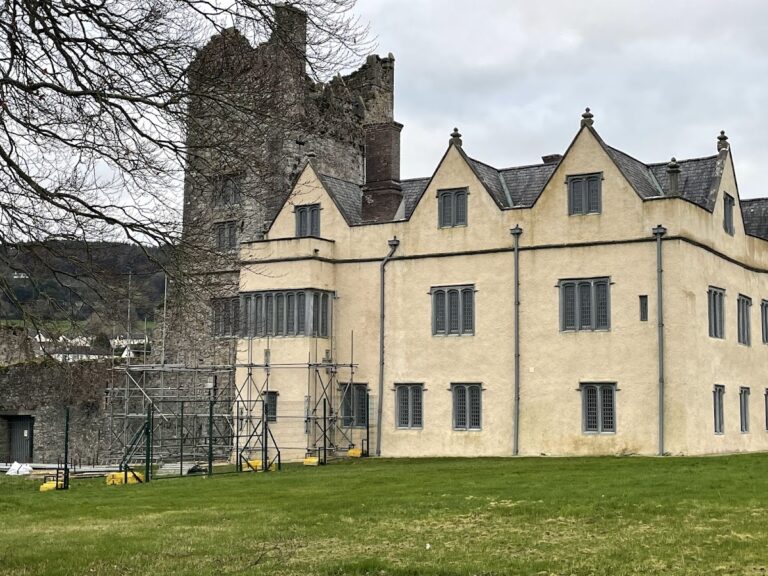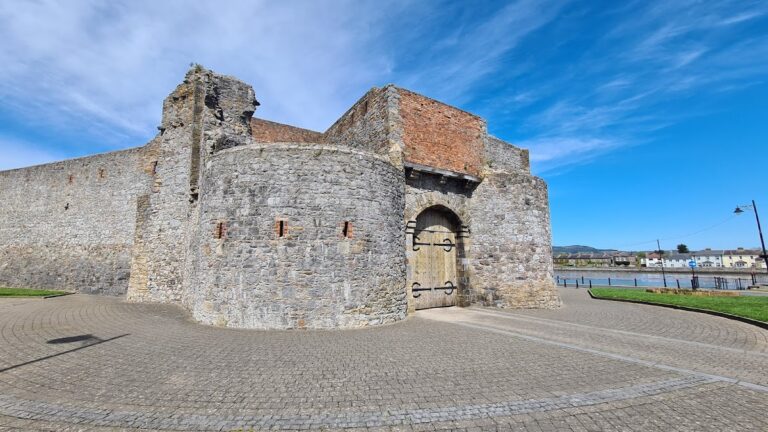Ballyhack Castle: A Medieval Tower House in County Wexford, Ireland
Visitor Information
Google Rating: 4.4
Popularity: Very Low
Google Maps: View on Google Maps
Country: Ireland
Civilization: Unclassified
Remains: Military
History
Ballyhack Castle stands in the village of Ballyhack, located in County Wexford, Ireland. It was constructed around the year 1480 by the Knights Hospitaller, also known as the Johanniter, a medieval religious and military order. Their presence at Kilcloggan established the castle as a strategic point to oversee the Suir estuary and control access to Waterford Harbour.
Following the dissolution of the Knights Hospitaller’s Irish holdings in 1541, ownership of Ballyhack Castle passed to the Etchingham family, a local Gaelic clan. During the late 16th century, the castle became a target amid the Desmond Rebellions, a series of uprisings challenging English rule in Munster and surrounding regions, indicating its ongoing military significance.
In the mid-17th century, amid the turmoil of the Irish Confederate Wars and the wider Wars of the Three Kingdoms, Ballyhack Castle was briefly held by Jacobite forces who supported the Catholic King James II. Around 1650, the castle came under the control of Oliver Cromwell’s New Model Army during the Cromwellian conquest of Ireland, marking another episode of military occupation.
During this period, Ballyhack Castle also served as a holding place for displaced individuals awaiting exile, a grim use reflective of the upheavals during the Cromwellian campaigns. By approximately 1652, these internments had ceased. Archaeological findings, including pottery shards, date the castle’s active use to the 17th century but suggest that it fell out of regular use by the late 1600s.
Centuries later, in the 20th century, efforts were made to restore the castle, highlighting its historical importance. In 1954, the Office of Public Works assumed responsibility for its care, preserving it as a national monument. Today, Ballyhack Castle is recognized as National Monument number 516 in Ireland.
Remains
Ballyhack Castle is a largely restored tower house, designed with a nearly square plan covering around 10 meters on each side. Built from red sandstone, this five-storey structure once served as a fortified residence and lookout. Its solid construction reflects typical late medieval Irish tower house design, emphasizing defense and surveillance capabilities.
The main entrance is located unusually on the fourth floor, facing southwest toward the valley below. This doorway was well protected by several defensive features: a projecting oriel or small turret allowed defenders to observe and attack from above; narrow arrow slits provided firing positions; and a murder hole, an opening above the door, enabled defenders to drop projectiles on attackers. Gothic style pointed arch windows can be seen on the entrance side and directly opposite, with biforium windows (windows divided into two openings by a small column) present on the southern face, while simpler windows appear on the northeast side.
Inside, a vaulted chamber on the northeast wall incorporates a sealed dungeon or hidden room, suggesting a concealed or secure space within the castle’s walls. On the second floor, part of the northeast section was dedicated to a chapel, indicating the religious functions incorporated into the tower’s design.
The top floor is finished externally with a narrow decorative frieze, a carved band running along the wall near the roofline, which adds a subtle ornamental detail. While the battlement walkway atop the castle no longer survives, remnants on the roof corners—including a turret base at the southwest edge, sockets for wooden beams at the southern corner, and additional wall fragments at the northern corner—point to the possibility that there was once an upper story or a larger roof structure.
Surrounding the main tower, the northern side reveals the remains of a barn wall stretching uphill, providing evidence of associated agricultural buildings. Near the castle’s entrance are the remains of a cottage, where archaeological finds such as Staffordshire pottery, fragments of clay pipes, and glass items date from the 17th or 18th century. These suggest continued occupation or reuse of the site even after the castle itself declined in active military importance.










